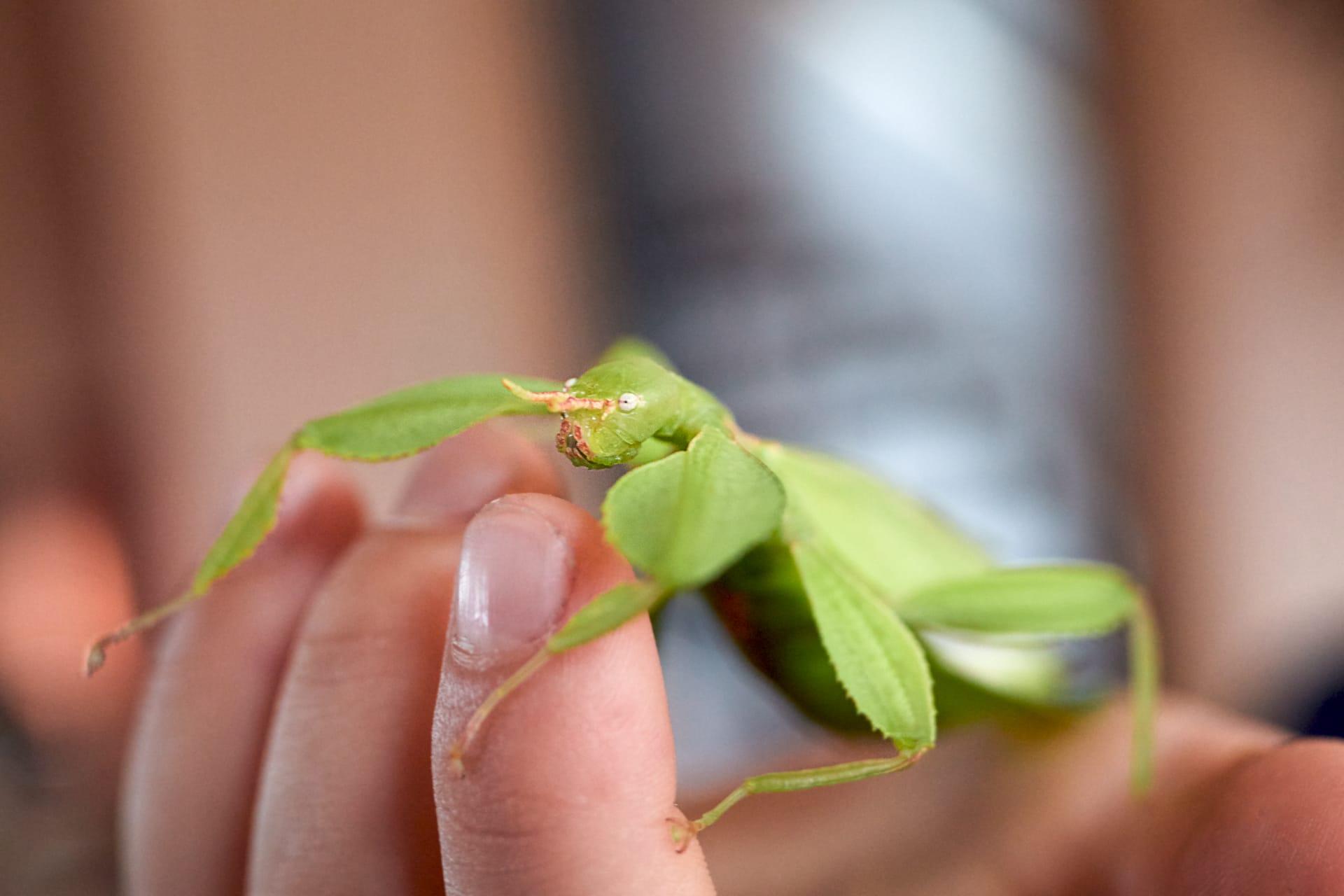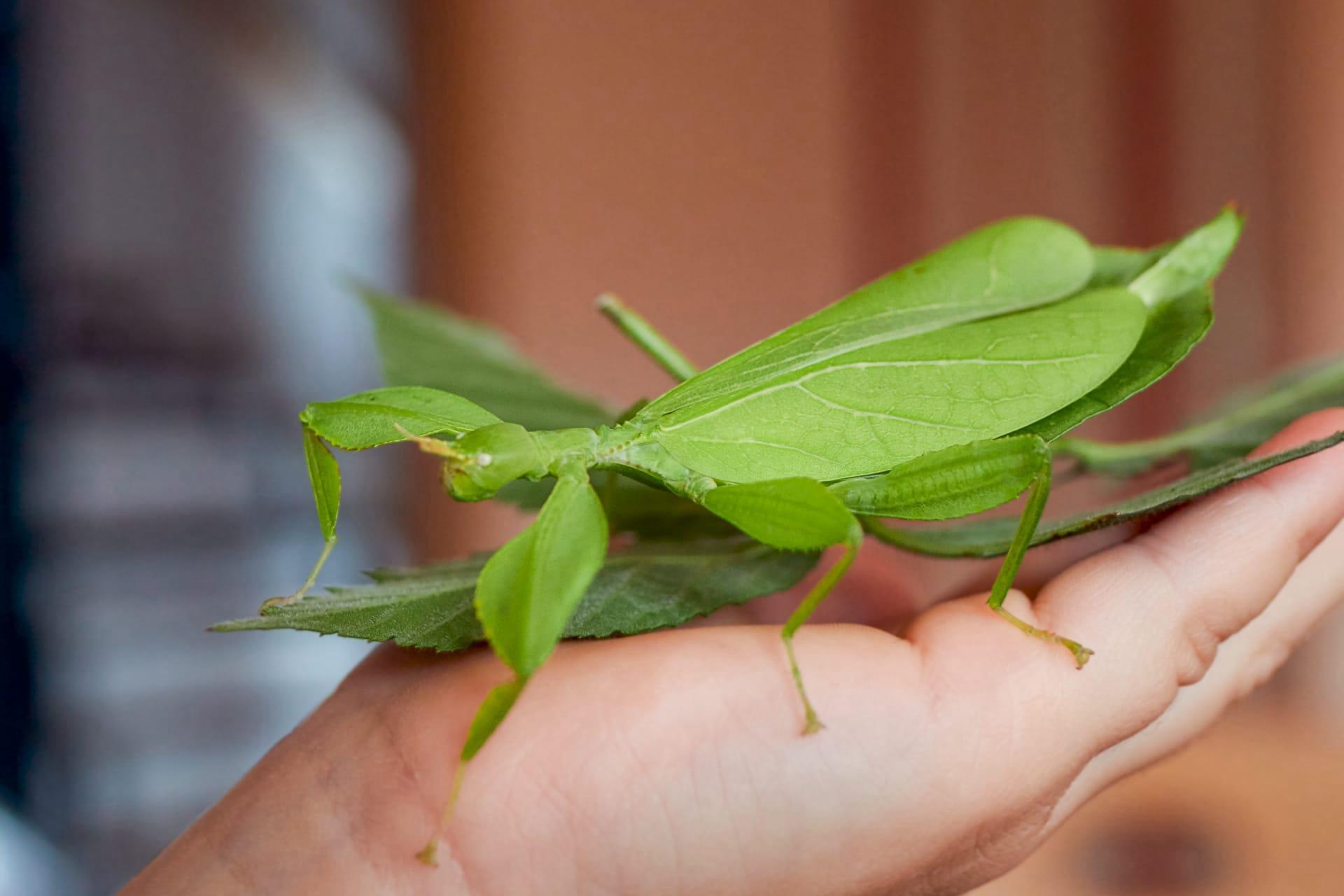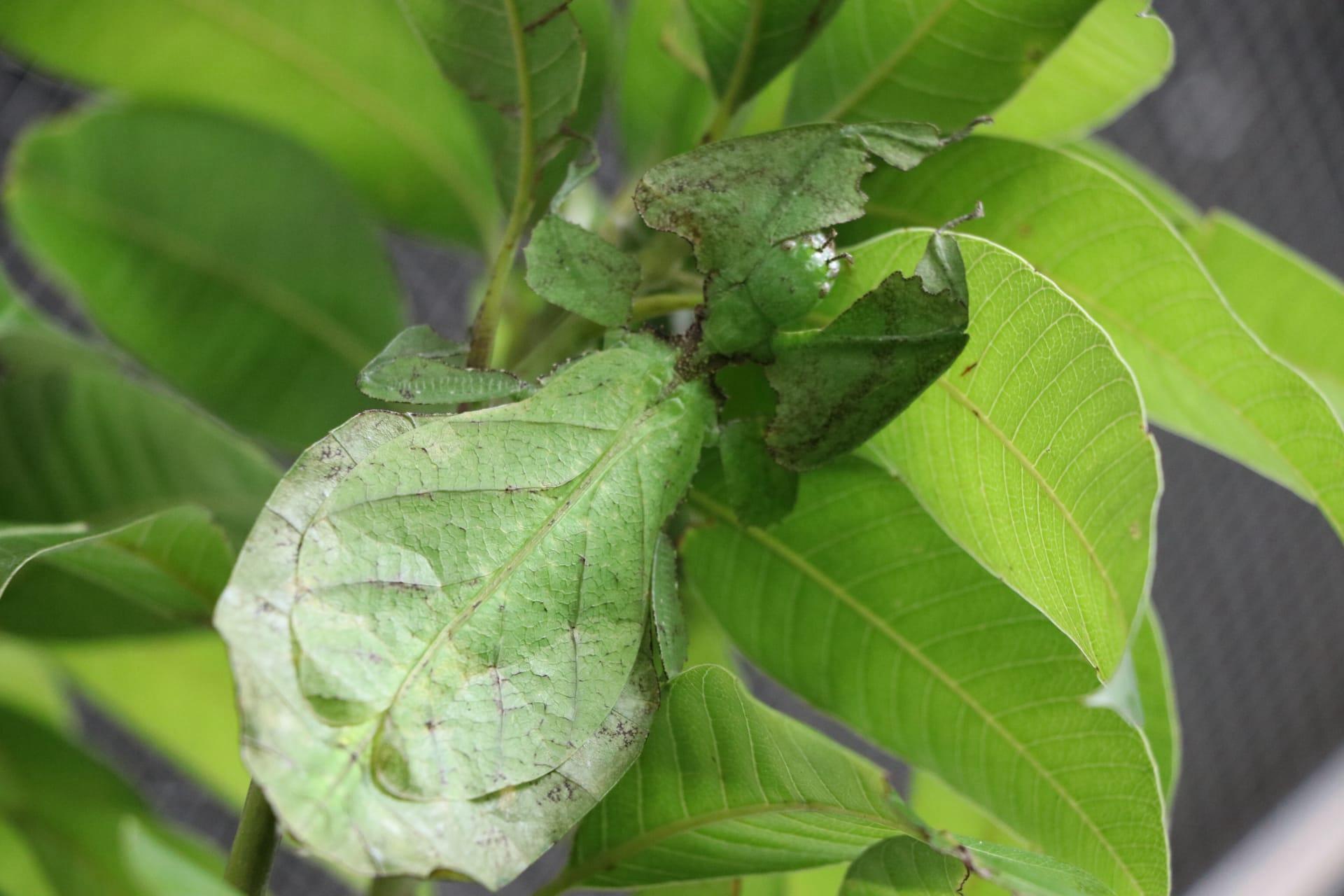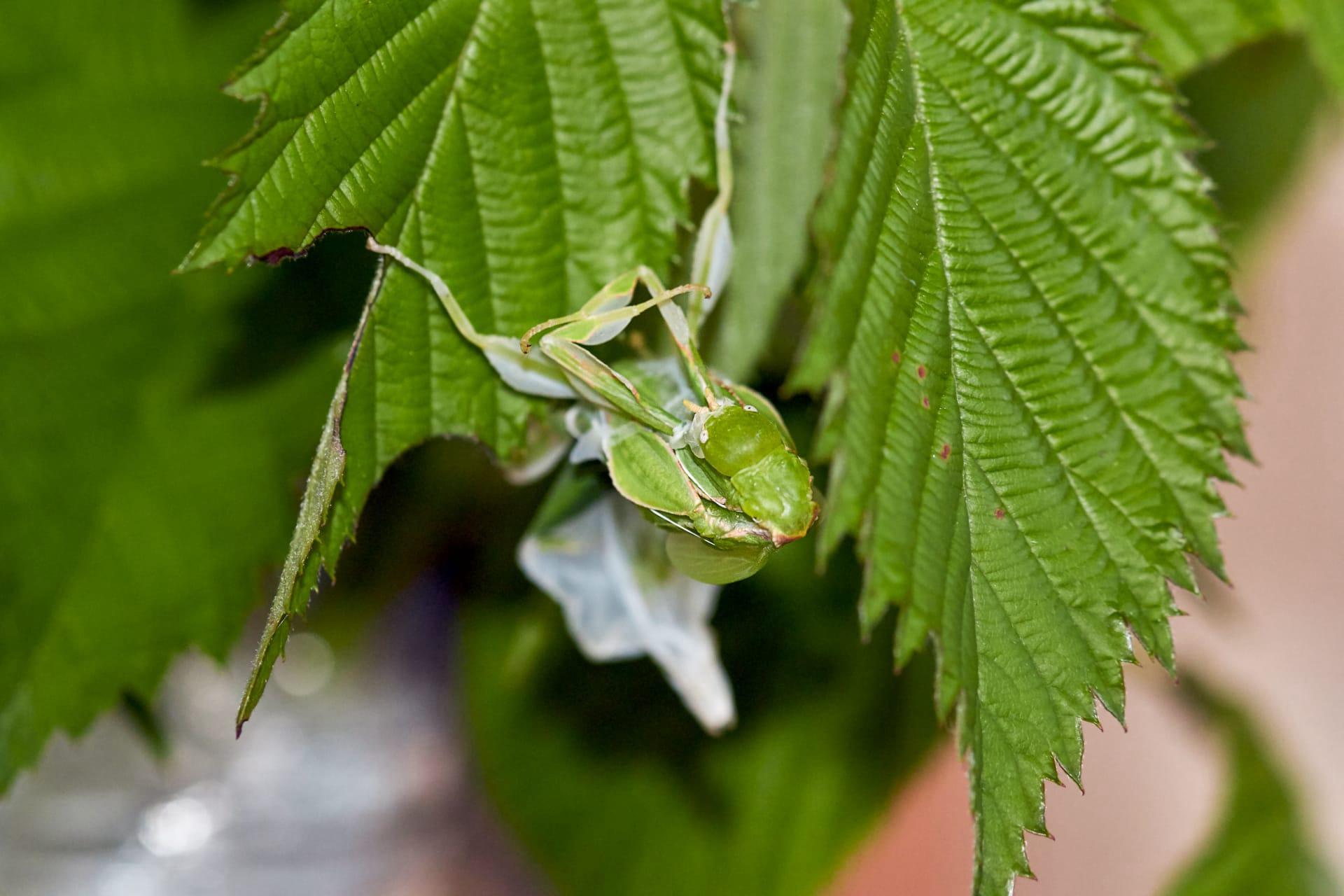1
Leaf insects, belonging to the family Phylliidae, are masters of camouflage. Their bodies mimic the appearance of leaves so closely that they even have vein-like structures and leaf-like textures. This remarkable adaptation protects them from predators. A leaf insect's color can vary from green to brown, depending on its habitat, to blend seamlessly with its environment. The most fascinating aspect is their size variation. They range from 28 to 100 millimeters in length, with females generally being larger than males.
Another striking fact about leaf insects is their reproduction strategy. Females can reproduce parthenogenetically, meaning they can lay eggs that develop into new individuals without fertilization by a male. This ability allows leaf insects to increase their population rapidly in favorable conditions. The eggs of leaf insects are cleverly disguised as plant seeds, complete with an outer coating that mimics the appearance of a seed's hard outer shell, further enhancing their survival chances.

2
Leaf insects have a unique diet that is strictly vegetarian, feeding primarily on the leaves of plants like guava, mango, and raspberry. This diet helps them maintain their leaf-like appearance. They are meticulous eaters, often consuming leaf edges to create a more convincing illusion of a real leaf, complete with bite marks and jagged edges. Their eating habits are so discreet that they do not disturb the overall appearance of the leaves they feed on, helping them stay hidden from predators.
Their movement is another fascinating aspect. Leaf insects mimic not just the appearance but also the motion of leaves. When they move, they do so with a gentle swaying motion, resembling a leaf being moved by the wind. This behavior is crucial for their survival, as it makes them nearly indistinguishable from actual leaves, even to the keenest of predators. This slow, deliberate movement is also a strategy to conserve energy, essential for an organism that relies on a diet with relatively low nutritional value.

3
Leaf insects exhibit a remarkable developmental process known as incomplete metamorphosis. Unlike butterflies, which undergo a complete transformation, leaf insects hatch from their eggs already resembling miniature adults. They shed their exoskeleton multiple times as they grow, a process known as molting. With each molt, they gradually develop their adult features, including their leaf-like wings and larger body size. This gradual development allows them to maintain their camouflage throughout their life cycle, an essential survival tactic.
Another intriguing aspect of leaf insects is their defense mechanism. When threatened, they can play dead, dropping to the ground and remaining motionless, further mimicking a fallen leaf. This behavior, known as thanatosis, can be so convincing that predators often overlook them. Additionally, some species can secrete a foul-smelling substance as a chemical defense to deter predators, adding an extra layer of protection to their already impressive camouflage skills.

4
The lifespan of leaf insects varies between species, but on average, they live for about one year. This short lifespan is typical for many insect species. During this time, they go through several life stages, adapting and perfecting their camouflage to ensure survival and reproduction. Environmental factors like temperature and humidity play a significant role in their development and lifespan, with optimal conditions leading to a longer life.
Leaf insects are not just masters of disguise but also play a vital role in their ecosystem. By feeding on leaves, they help in the natural pruning of plants, which can stimulate new plant growth. Additionally, their presence indicates a healthy, biodiverse environment, as they thrive in regions with a rich variety of plant life. This makes them important indicators of ecological health and biodiversity in their habitats.

5
Communication among leaf insects is subtle but effective. They primarily use visual and tactile signals for mating and territorial interactions. During mating season, males use their antennae to detect pheromones released by females, guiding them to potential mates. Once close, they rely on delicate tactile signals to initiate mating. This form of communication is vital for species where individuals are so well camouflaged that they are hard to locate.
Lastly, the impact of leaf insects on human culture is noteworthy. They are popular in the pet trade for their unique appearance and relatively easy care requirements. Leaf insects have also been subjects in scientific research, particularly in studies related to mimicry and camouflage. Their ability to blend into their environment so perfectly continues to intrigue scientists and nature enthusiasts alike, making them a fascinating subject in the study of natural selection and adaptation.